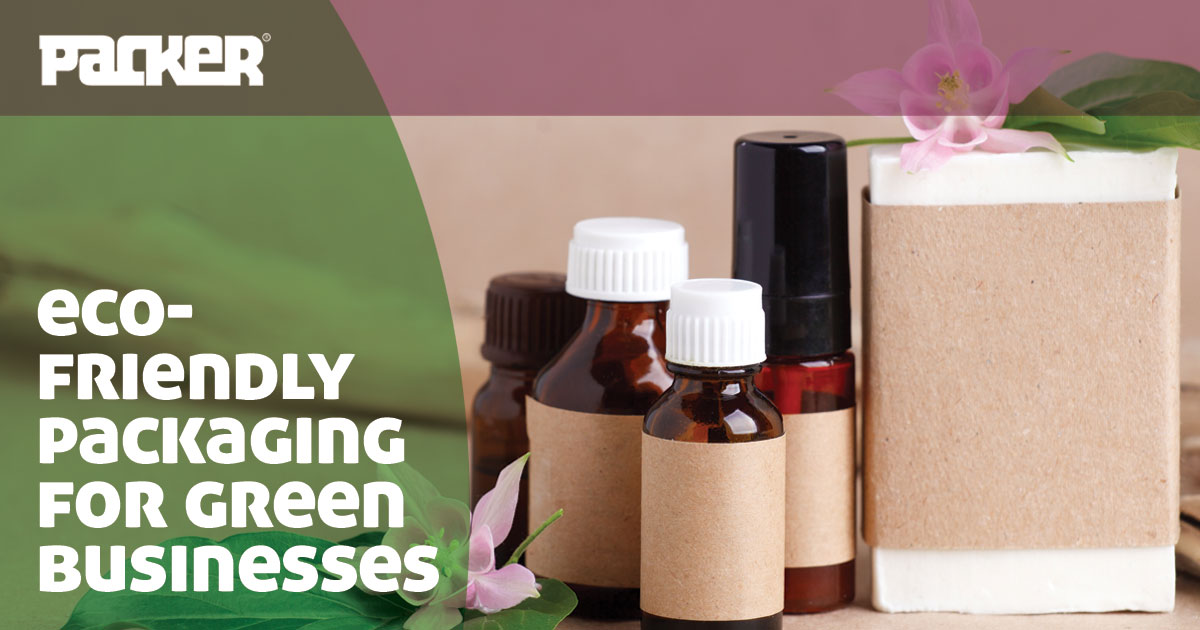
Almost all businesses are taking steps to reduce their impact on the environment, from huge multinationals to micro-business crafters, and we all know that product packaging is one of the biggest issues as it’s usually discarded as soon as the purchase is unwrapped.
Manufacturers and retailers need to think about what their customers do with the wrapping, boxes, paper and packing materials after purchase and to choose materials that are part of the solution, not the problem. Thankfully, there are lots of new and innovative materials so finding eco-friendly packaging in the UK isn’t difficult.
Biodegradable packing peanuts
Some countries are no banning polystyrene packaging as it doesn’t degrade, and it can’t be recycled easily. Also known as EPS, or expanded polystyrene foam, the peanuts made from this material usually end up being blown around the streets, from where they find their way into rivers and lakes. Once in waterways, they can pollute the water and harm wildlife; they also take centuries to degrade.
EPS peanuts have been a popular form of loose-fill packaging as they fill the cavities around boxed items, preventing them from moving around and getting damaged during transit. Now, companies can use biodegradable peanuts, made from natural and sometimes recycled materials, which work in the same ways as EPS peanuts, but without the downsides
Cardboard bubble wrap
While many of us will mourn the demise of plastic bubble wrap and its stress-relieving popping properties, we can all appreciate that it’s something of a disaster for the environment. There are several alternatives in development, with up-cycled corrugated cardboard already available.
The cardboard is perforated with a pattern of cuts that produces a ridged or concertinaed wrapping material which offers the same sort of protection as the conventional plastic bubble wrap.
Recycled air pillows
These inflatable air pillows come in lots of different sizes and are great for filling voids and cushioning packed items. The bags themselves can be made from recycled or compostable materials and, as most of the volume they take up is just air, they weigh almost nothing.
Even better, these air pillows can be reused, recycled or (if you choose the right ones) composted, leaving behind almost no trace on the environment.
Corn starch packing materials
Corn starch is a big player in the eco-friendly packaging arena. It’s derived from the corn plant and this starch, once processed, has a lot of plastic-like properties that make it ideal for roles traditionally filled by nasty old plastics. Bottles, moulded packaging, packing peanuts and so on, can all be made from this material, which simply composts or dissolves into the environment after use.
Recycled paper and cardboard
Sometimes, you have to use old-school packing solutions like paper and cardboard. However, you can still earn some extra greenie points by using post-consumer or post-industrial paper and cardboard. These materials are organic, of course, but if you’re using paper from a producer that doesn’t plant as many trees as it fells, then you’re not helping! Look for paper products that are FSC-certified or, if you can, reuse your own materials as much as possible.
Recycled plastics
Heavier, very fragile or highly-valuable items need extra care in transit and air pillows and peanuts might not be up to it. Sometimes, you need sturdier materials like plastics, especially if you need to use frames or other forms of stillage.
It might seem like a shame to revert to plastics, but you can always claw back some green credit by opting for recycled plastics and, as they become more available, biodegradable plastics.
Organic or reclaimed fabrics
We’ve become so used to seeing plastic bags that we’ve forgotten than our grandparents used fabric or netting shopping bags – sometimes for years at a time! To reduce the number of single-use plastic bags that get into the environment we can all – consumers and retailers alike, return to using fabric bags and packing materials. You can also look at degradable bags made from materials like hemp and even tapioca or palm leaves, as these will degrade within weeks rather than centuries and provide nutrition for the soil or waterways as they do so.



